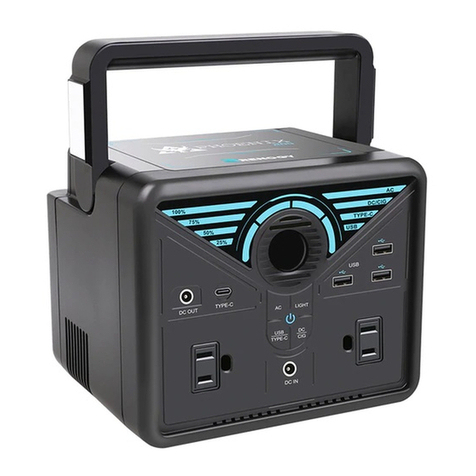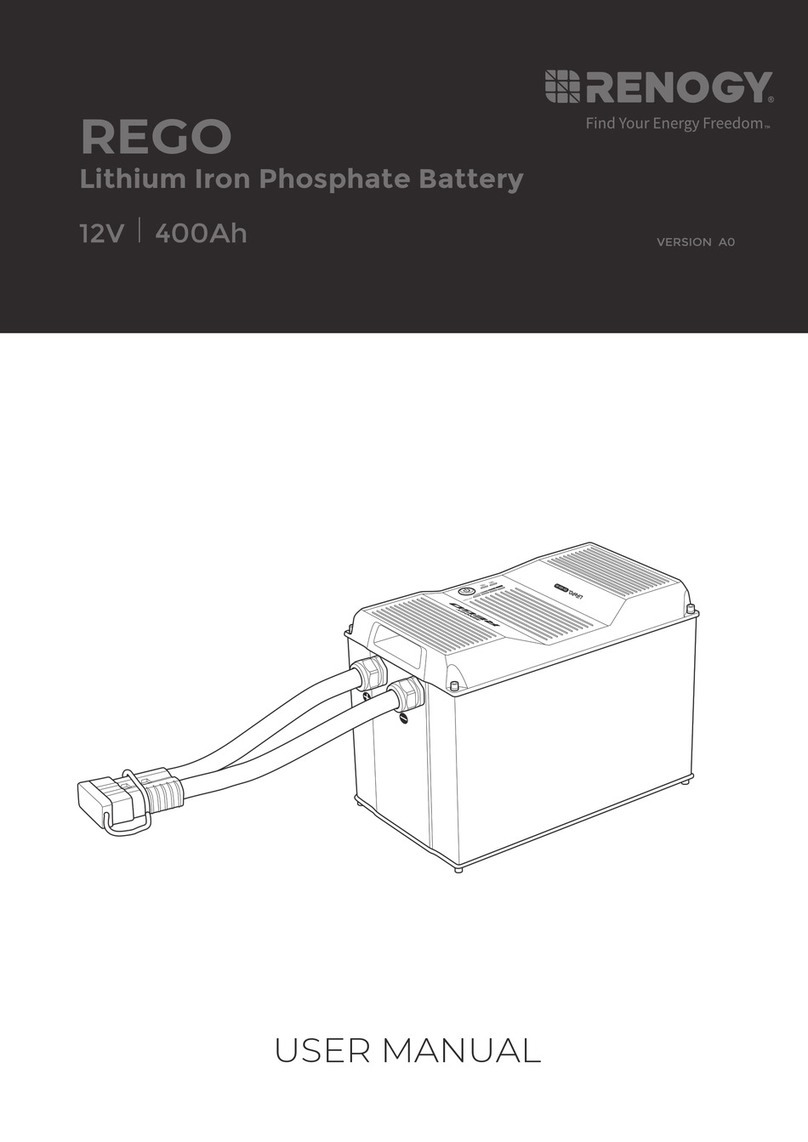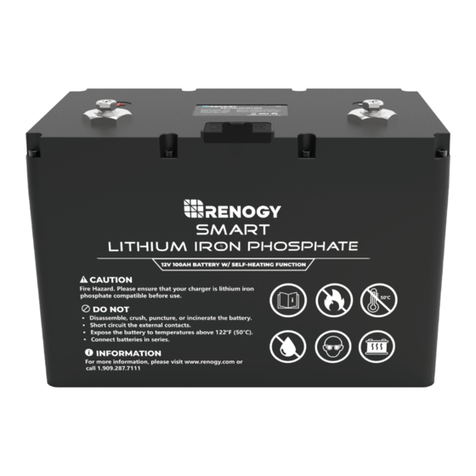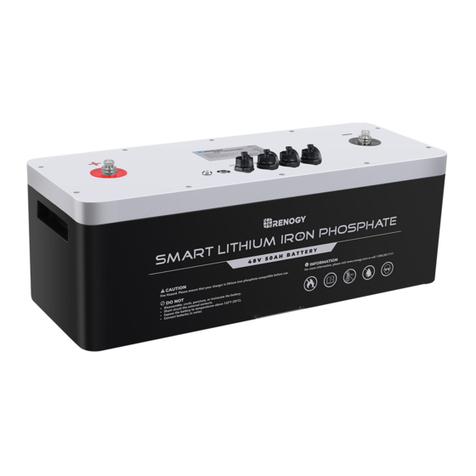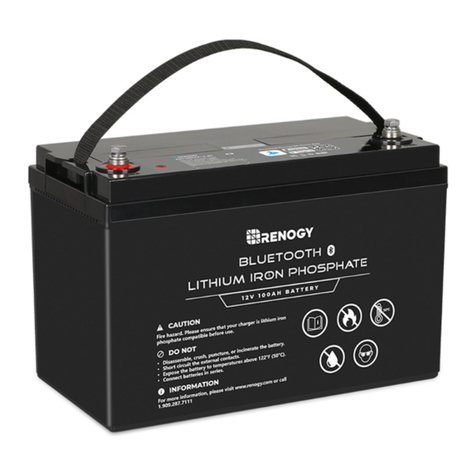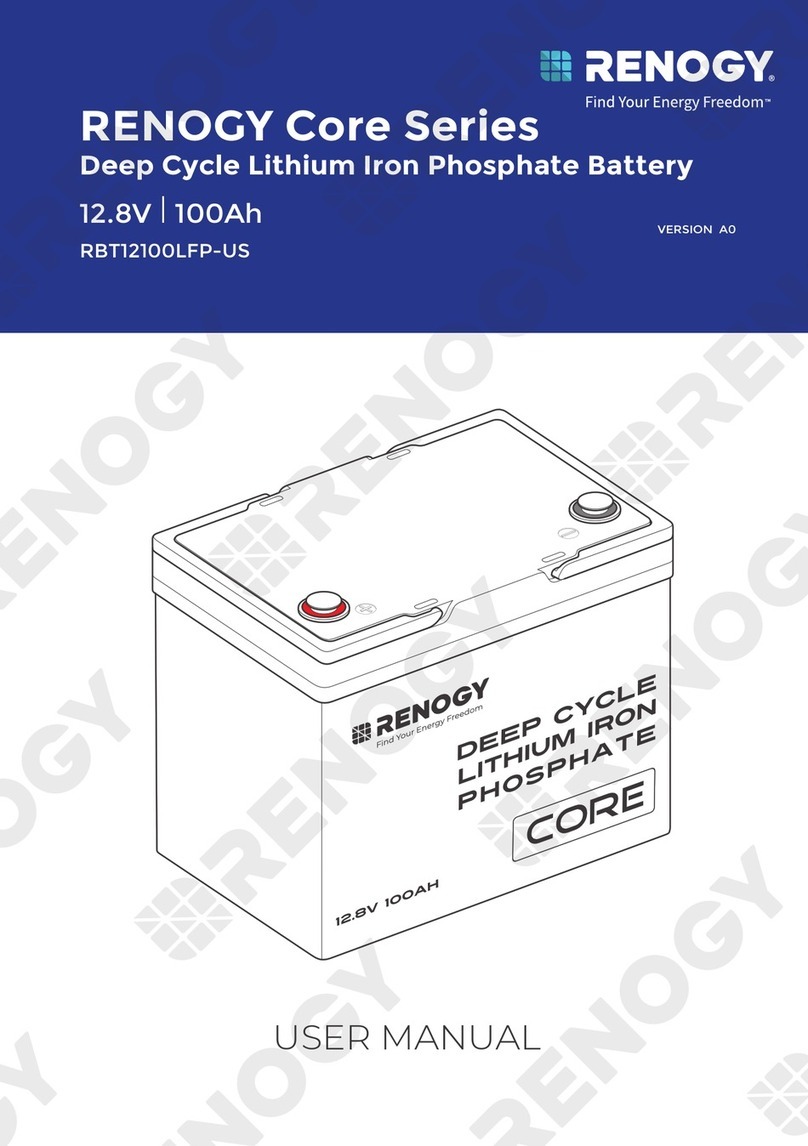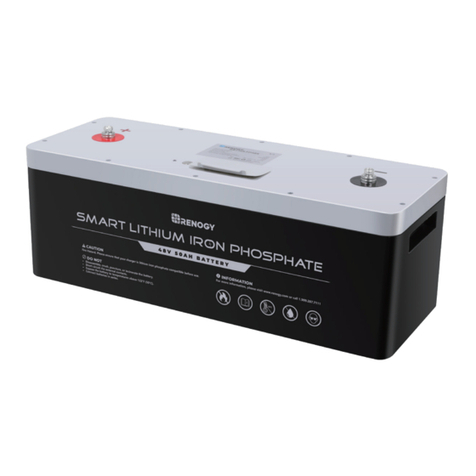
SAFETY INSTRUCTIONS
DO NOT puncture, drop, crush, burn, penetrate, shake, or strike the battery.
Please keep the battery away from water, heat sources, sparks, and hazardous chemicals.
DO NOT open, dismantle, or modify the battery.
DO NOT short-circuit the battery terminals. Doing so can cause current bursts and lead to
irreversible damage to the system and the battery.
Please verify the polarity before connecting the wiring. Reversing polarity can and will
destroy the battery.
Please secure all cable connections to the proper specification in order to ensure good
contact between the cable lugs and the terminals. Over-tightening cable connections can
cause terminal breakage and loose cable connections can cause terminal meltdown or fire.
Please avoid too high a voltage difference between paralleled batteries, despite the
auto-balancing function, to avoid triggering the over-current protection.
ONLY charge the battery with a battery charger or charge controller that is compatible with
lithium iron phosphate batteries.
DO NOT exceed the maximum charge and discharge current to the battery.
If the battery shuts off due to low state of charge (SoC), please disconnect the battery from
the discharge equipment to eliminate potential parasitic loads and recharge the battery as
soon as possible. Failure to do so may cause irreversible damage to the battery.
DO NOT string batteries in series. Doing so can cause catastrophic failure.
ONLY connect batteries of the same manufacturer and model in parallel.
It is recommended to pair the battery with discharge equipment featuring low voltage
disconnect in the system.
DO NOT discharge the battery at high temperatures above 140 (60 ).
Please charge the battery at least once every 3~6 months for maintenance and to prevent
over-discharge. Long periods of storage can lead to deterioration of battery performance.
